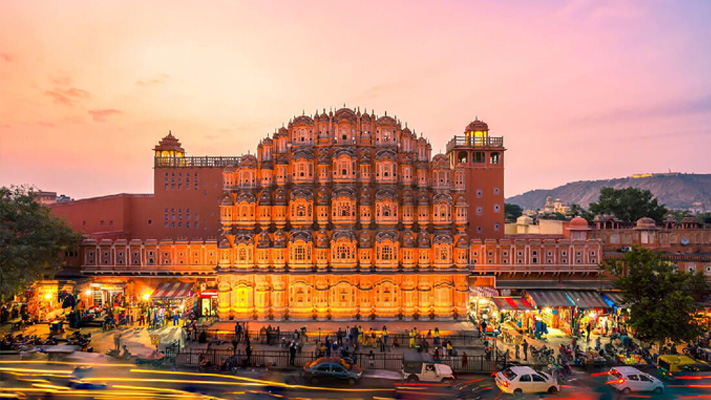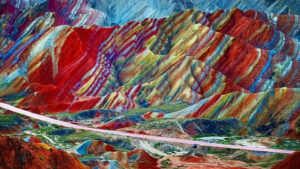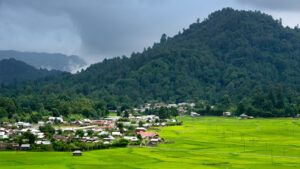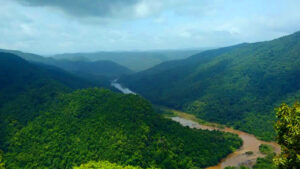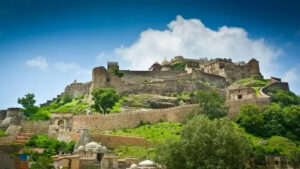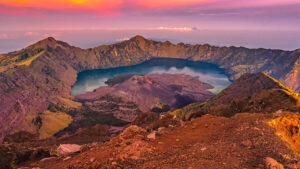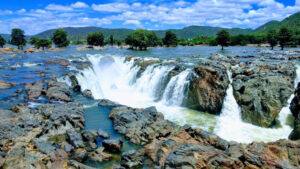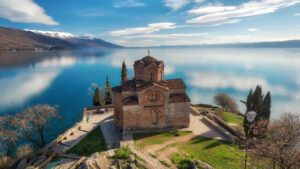10 OF THE CAPTIVATING DESTINATIONS IN INDIA THAT HAVE TO BE VISITED TO BE TRULY ENJOYED

Naming a country more diverse than India would prove challenging, if not impossible. India boasts an unparalleled abundance of traditions, cuisines, landscapes, and religions within its borders. From the majestic peaks of the Himalayas in the north to the vast desert sands of the west, and from the serene palm-fringed rivers to the enchanting islands of the south, the country offers a tapestry of beauty and wonder. Within this vast, complex, and spiritual nation, we present 10 of the many awe-inspiring destinations that epitomize the captivating essence of India.

1. Taj Mahal
The Taj Mahal, an architectural masterpiece and one of the Seven Wonders of the World, is a symbol of eternal love and a testament to the rich history and cultural heritage of India. Located in Agra, Uttar Pradesh, this iconic white marble mausoleum was built by the Mughal emperor Shah Jahan in the 17th century in memory of his beloved wife, Mumtaz Mahal.
Visitors to the Taj Mahal are captivated by its awe-inspiring grandeur and the serene ambiance that surrounds it. The site also serves as a UNESCO World Heritage Site, attracting millions of visitors from around the world who come to marvel at its timeless beauty and soak in the rich history it represents.
Exploring the Taj Mahal is a truly unforgettable experience. It stands as an everlasting testament to human ingenuity, architectural brilliance, and the power of love, making it a must-visit destination for travelers seeking a glimpse into the extraordinary heritage of India.
2. Jaipur, Rajasthan
Jaipur, the capital city of Rajasthan, is a captivating destination that immerses visitors in a world of vibrant colors, majestic palaces, and rich cultural heritage. Known as the “Pink City,” Jaipur seamlessly blends tradition with modernity. The magnificent Amber Fort, a UNESCO World Heritage Site, showcases the opulence of the Rajput era, while the City Palace offers a glimpse into Jaipur’s royal heritage. The famous Hawa Mahal, or Palace of the Winds, is an architectural marvel with its intricate facade. Jaipur’s bustling markets, such as Johri Bazaar and Bapu Bazaar, offer a sensory overload with their exquisite jewelry, textiles, and handicrafts. The city’s cuisine tantalizes the taste buds with its rich flavors and aromatic spices. Jaipur hosts vibrant festivals, including the renowned Jaipur Literature Festival, and its surrounding areas provide opportunities to explore rural charm and architectural wonders. With its regal architecture, bustling markets, and warm hospitality, Jaipur invites visitors to experience the enchanting world of Rajasthan in all its splendor.
3. Chand Baori, Abhaneri, Rajasthan
Chand Baori, located in the village of Abhaneri in Rajasthan, is an architectural marvel that mesmerizes visitors with its sheer grandeur and intricate design. This ancient stepwell is one of the deepest and largest stepwells in India, featuring a symmetrical arrangement of 3,500 steps that descend 13 stories into the ground.
Built in the 9th century by King Chanda of the Nikumbha dynasty, Chand Baori served as a reliable water source for the local community during dry seasons. However, it is more than just a functional structure; it is a masterpiece of craftsmanship and engineering. The symmetrical steps, adorned with intricate carvings and sculptures, create a mesmerizing sight, reflecting the exquisite architectural skills of the past.
Visitors can explore the elaborate galleries and pavilions surrounding the stepwell, marvel at the play of light and shadows, and appreciate the intricate details that adorn its walls. This architectural wonder stands as a testament to the advanced water management systems of ancient India and is a reminder of the region’s rich cultural and historical heritage.

4. Jodhpur, Rajasthan
Jodhpur, located in Rajasthan, India, is a city that embodies the essence of royalty and rich cultural heritage. Known as the “Blue City” for its blue-painted houses in the old town, Jodhpur offers a mesmerizing blend of history, architecture, and vibrant traditions.
At the heart of Jodhpur stands the magnificent Mehrangarh Fort, a towering fortress that showcases breathtaking architecture and offers panoramic views of the city. The intricately carved palaces, expansive courtyards, and impressive museum within the fort provide a glimpse into the opulent lifestyle of the Rajput rulers.
Wandering through the bustling streets of the old town, one can explore the vibrant bazaars, where artisans create exquisite handicrafts, textiles, and jewelry. The bustling Sardar Market, with its colorful stalls and aromatic spices, is a delight for the senses.
Jodhpur’s rich cultural heritage comes to life during festivals such as the Marwar Festival and Rajasthan International Folk Festival, where traditional music, dance, and art captivate audiences. The city’s warm hospitality extends to culinary delights, with flavorsome Rajasthani cuisine that tantalizes the taste buds.
5. Nubra Valley, Ladakh
Nestled high in the Himalayan region of Ladakh, Nubra Valley is a breathtaking destination that transports visitors to a surreal landscape of awe-inspiring beauty. Located in the northernmost part of India, this valley is known for its dramatic landscapes, picturesque villages, and serene monasteries.
Nubra Valley is renowned for its unique geography, with towering sand dunes contrasting against snow-capped mountains. The shimmering Nubra River meanders through the valley, adding to its charm. The journey to Nubra Valley is an adventure in itself, as it involves traversing the world’s highest motorable pass, Khardung La.
Visitors to Nubra Valley can explore the charming villages of Diskit, Hunder, and Sumur, where traditional Ladakhi culture is preserved. The Diskit Monastery, perched on a hilltop, offers panoramic views of the valley and houses a 32-meter tall statue of Maitreya Buddha. Nubra Valley is also home to hot springs, where visitors can relax and rejuvenate amidst the tranquil surroundings.
The night sky in Nubra Valley is a sight to behold, with its clear visibility and minimal light pollution. Stargazing enthusiasts can witness a mesmerizing display of stars, constellations, and even the Milky Way.

6. Dal Lake, Srinagar, Jammu & Kashmir
Dal Lake, located in the picturesque Kashmir Valley in India, is a serene and captivating destination that enchants visitors with its ethereal beauty. Often referred to as the “Jewel in the Crown of Kashmir,” Dal Lake is a vast, mirror-like water body surrounded by majestic mountains and lush greenery.
The lake is famous for its iconic houseboats, known as “Shikaras,” which are traditional Kashmiri wooden boats adorned with vibrant colors and intricate designs. Exploring the lake in a Shikara is a must-do activity, as it takes you through a network of interconnected waterways, known as “floating gardens,” where local villagers cultivate flowers and vegetables on beds of floating vegetation.
For a truly immersive experience, visitors can choose to stay in one of the houseboats that line the shores of Dal Lake. These beautifully decorated floating accommodations provide a unique glimpse into the local way of life, as well as an opportunity to witness stunning sunrises and sunsets over the serene waters.
7. Kerala
Kerala, often referred to as “God’s Own Country,” is a captivating destination in southern India known for its serene backwaters, lush green landscapes, and rich cultural heritage. This coastal state is blessed with abundant natural beauty, from palm-fringed beaches and tranquil backwaters to mist-covered hill stations and spice-scented plantations.
One of the highlights of Kerala is its enchanting backwaters, a network of interconnected canals, rivers, and lagoons that meander through picturesque villages and verdant landscapes. Cruising along the backwaters on a traditional houseboat, known as a “kettuvallam,” is a must-do experience.
Kerala is also home to the magnificent Western Ghats, a mountain range that runs parallel to the coastline. The hill stations of Munnar, Wayanad, and Thekkady offer breathtaking views, misty valleys, and tea and spice plantations. The state is rich in cultural heritage, with its ancient temples, colorful festivals, and classical art forms like Kathakali and Mohiniyattam. Exploring the historic city of Kochi provides a glimpse into Kerala’s diverse cultural tapestry.
Kerala is also renowned for its mouthwatering cuisine, known for its flavorsome curries, seafood specialties, and traditional vegetarian dishes. Coconut, spices, and fresh local ingredients are the essence of Kerala’s culinary delights.

8. Yumthang Valley, Sikkim
Yumthang Valley, nestled in the pristine beauty of Sikkim, is a breathtaking destination that showcases the enchanting landscapes of the Himalayas. Also known as the “Valley of Flowers,” Yumthang is a paradise for nature lovers and adventure enthusiasts alike.
Situated at an elevation of 3,500 meters, the valley offers a captivating display of alpine meadows, snow-capped peaks, and gurgling rivers. During springtime, the valley comes alive with a riot of colors as rhododendrons, primulas, and other wildflowers bloom in abundance, creating a picturesque panorama.
Yumthang is also home to the famous Shingba Rhododendron Sanctuary, which houses over 24 species of rhododendrons, making it a haven for botany enthusiasts and photographers.
Adventure seekers can indulge in various activities such as trekking, camping, and yak riding, immersing themselves in the pristine beauty of the surroundings. The region is also known for its hot springs, where visitors can relax and rejuvenate amidst the tranquil ambiance.
9. Athirapally Falls, Athirappilly
Athirapally Falls, located in Athirappilly, Kerala, is a mesmerizing natural wonder that captivates visitors with its sheer beauty and raw power. As one of the largest waterfalls in India, Athirapally Falls is a cascading masterpiece, cascading down from a height of 80 feet with thundering force.
Surrounded by lush greenery and dense forests, the falls create a dramatic spectacle as the Chalakudy River plummets into a picturesque pool below. The sight of the water gushing through the rocks and creating a misty spray is truly awe-inspiring.
Athirapally Falls is not only a visual treat but also a haven for nature lovers and wildlife enthusiasts. The surrounding forest is home to a variety of flora and fauna, including rare species of birds and butterflies. Visitors can explore the nearby Vazhachal Forest Garden or take a refreshing trek through the forest trails to get closer to nature.
The falls have also caught the attention of the film industry, with their striking beauty being featured in several Indian movies. It is no wonder that Athirapally Falls is often referred to as the “Niagara Falls of India.”

10. Thar Desert, Rajasthan
The Thar Desert, also known as the Great Indian Desert, is a vast expanse of arid land located in the northwestern part of India. Stretching across Rajasthan and parts of Gujarat, the Thar Desert covers an area of approximately 200,000 square kilometers, making it one of the largest deserts in the world.
This unique desert landscape is characterized by rolling sand dunes, sparse vegetation, and a harsh climate. Despite the harsh conditions, the Thar Desert holds a certain allure and charm that attracts travelers from around the world.
Visitors can embark on camel safaris, which allow them to traverse the undulating dunes and experience the nomadic lifestyle of the desert dwellers. Riding on the back of a camel while watching the sunset over the desert horizon is an unforgettable experience.
Staying in a desert camp is a popular option for visitors, where they can sleep under the starlit sky and enjoy traditional Rajasthani cuisine around a bonfire, accompanied by local music and dance.
The Thar Desert is a captivating destination that showcases the raw beauty of the arid landscapes and the resilient spirit of the desert people. Its unique blend of adventure, culture, and natural beauty make it a must-visit destination for those seeking an unforgettable desert experience.



